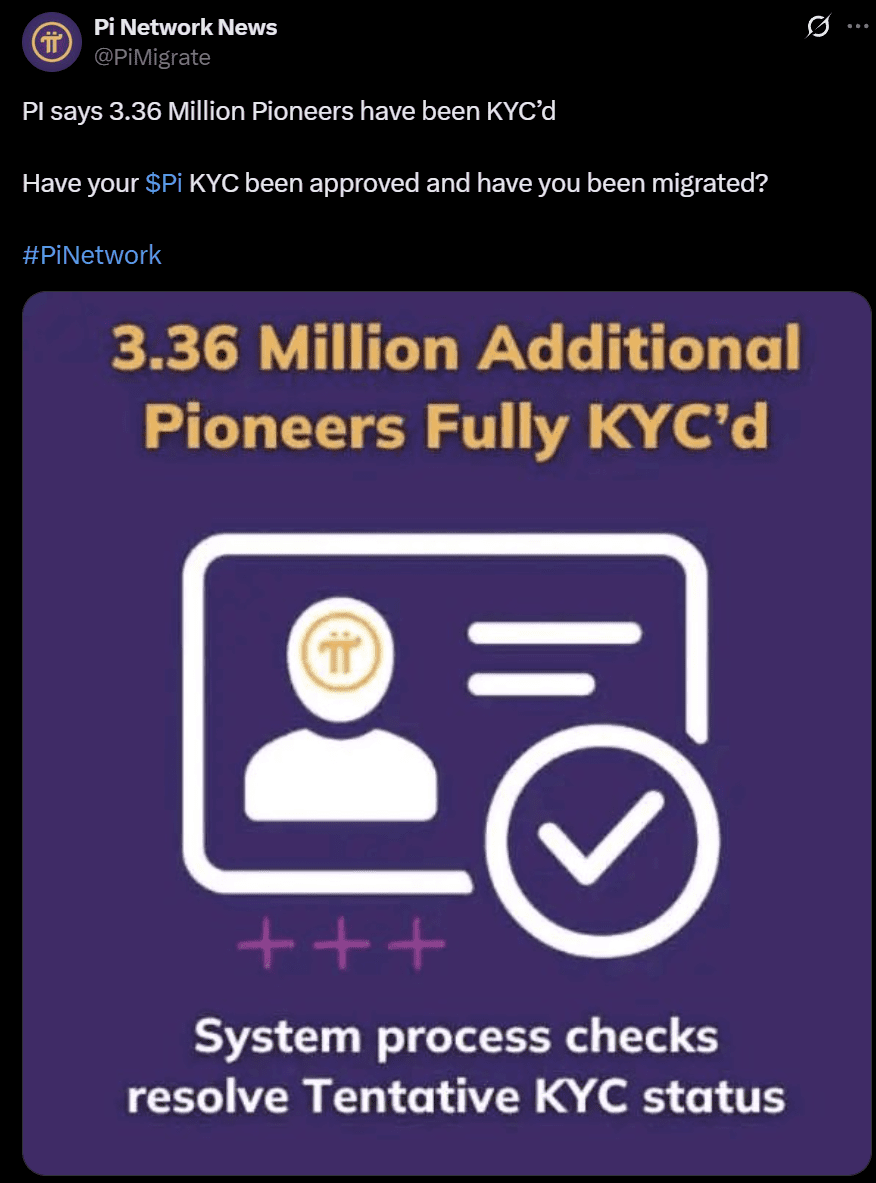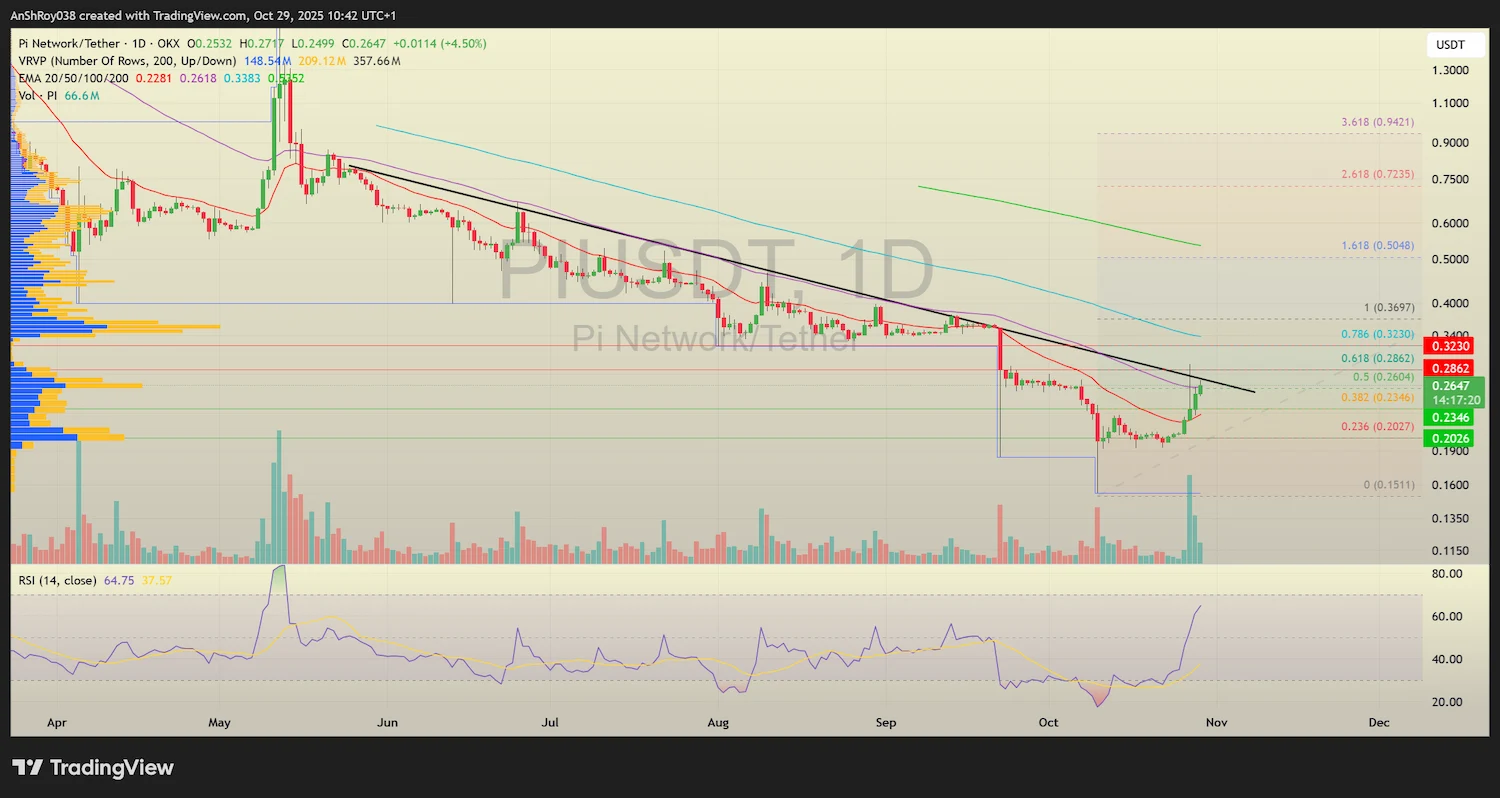Pi Network reported that 3.36 million additional users had completed its Know Your Customer (KYC) process, marking another step toward expanding migration across its ecosystem. The update followed fresh claims about the network’s alignment with ISO 20022, a global financial messaging standard expected to take effect in November 2025.
While the KYC milestone reflected measurable internal growth, the ISO narrative focused on Pi’s ambition to integrate with mainstream payment infrastructure.
Pi Network’s Dual Push: Verified Users and Global Compatibility Claims
Pi Network’s latest milestone came as part of its broader effort to strengthen internal compliance and external credibility. The 3.36 million newly KYC-verified users reflected progress in expanding participation across the network’s closed mainnet phase.

The process had been a key obstacle for many users, as delays and verification errors slowed migration. By resolving those issues, Pi Network aimed to reinforce trust and prepare for eventual integration with external systems.
Additionally, the project highlighted its upcoming alignment with ISO 20022. This is the international financial messaging standard due to take effect in November 2025. Pi Network’s developers claimed the upgrade would enhance interoperability with global payment infrastructures. The upgrade would also position the project for future relevance beyond its enclosed ecosystem.

However, readiness and adoption are different beasts. Pi Network’s claim centered on technical alignment, not on confirmed certification or real-world usage by banks or fintechs. The initiative marked intent, not integration. Still, acknowledging the effort remains important. Technical compatibility could improve the project’s standing if paired with regulatory clarity and liquidity.
Taken together, the KYC expansion and the ISO 20022 push reflected Pi’s two-track strategy. Pi intends to solidify its internal structure, while promoting a future-facing narrative. Whether that combination translates into tangible utility will depend on execution, regulatory cooperation, and the network’s ability to attract institutional confidence.
PI Coin Tests Key Resistance
Following the KYC and ISO 20022 developments, Pi Network’s native token showed renewed short-term strength. The PI/USDT pair rebounded toward $0.27 on Oct. 29 after defending immediate support near $0.23. Buyers built momentum from mid-October lows, pushing the price above short-term moving averages and testing the lower boundary of its descending trendline.

The PI USDT pair price faced immediate resistance near $0.286, aligning with the 0.618 Fibonacci retracement level. Flipping this zone would target the next resistance near $0.32, where the 100-day lends support to the 0.786 FIB level. The region carried significant historical supply pressure, and traders treated it as the primary ceiling in the current structure.
On the downside, the token had strong support near $0.23, followed by an extended demand area around $0.20. The Relative Strength Index hovered above 60, signaling strong but not overextended momentum. Volume data confirmed steady accumulation since the mid-month rebound. However, overall participation remained well below earlier peaks.
However, any rejection from the $0.26–$0.32 zone could trigger a retest of the recent base. The coming sessions would determine whether the rally was a short-term relief move or the beginning of a more sustainable trend.
The recent outburst by the unofficial Pi Network News Global account added another layer of controversy to the project’s already divided online community.

What began as a coordinated engagement stunt — asking followers to comment a single dot to “break the algorithm” — quickly devolved into a personal attack campaign against Bybit CEO Ben Zhou. The account accused Zhou of being “childish” after he reportedly blocked it on X, using language that bordered on harassment.

The escalation reflected the peculiar fervor often seen within Pi Network’s online circles, where criticism of the project routinely sparks emotional, coordinated responses. The tone of the posts — defensive, confrontational, and heavily crowd-driven — underscored how parts of the community blur the line between advocacy and hostility.
It is important to note that the official Pi Network core team had no connection to the account or the incident. The exchange instead highlighted the unpredictability of Pi’s social ecosystem, where grassroots supporters frequently take extreme positions that risk overshadowing the project’s broader development efforts.
